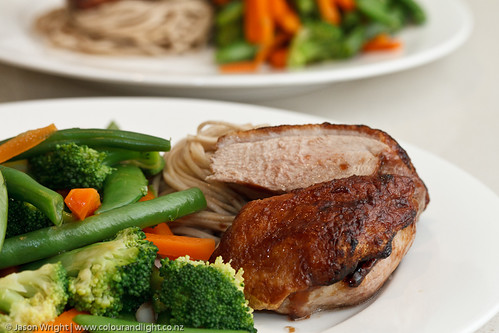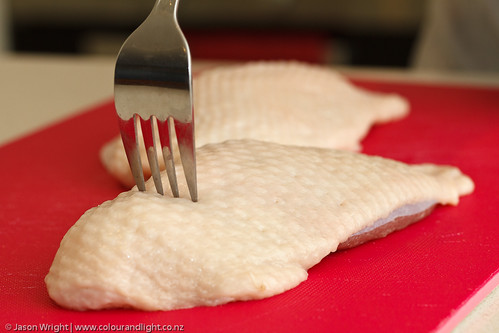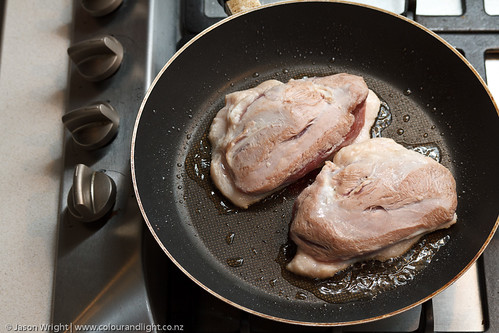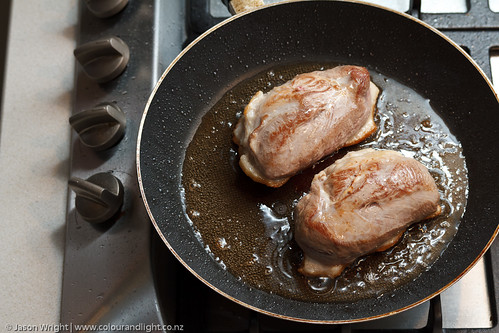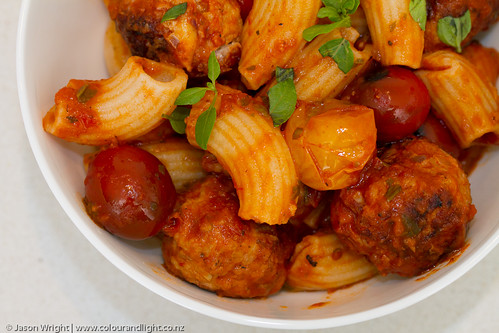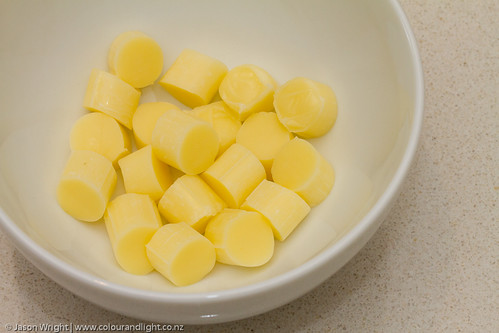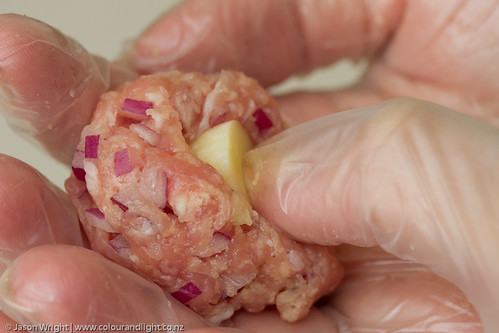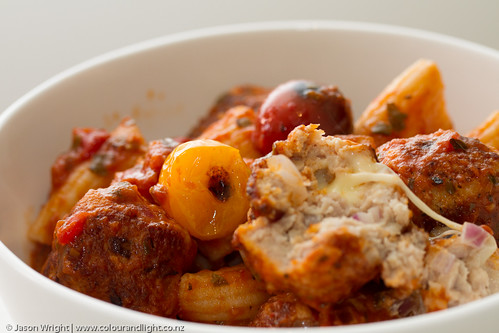I dont make dessert often enough. With the last of the fresh summer berries available now, I vow to make panna cotta more often!
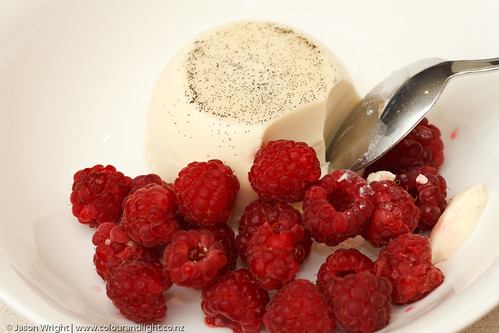
Recipes vary widely - some use cream only, or add varying portions of milk for a lighter finish. I've seen yoghurt used in place of some or all of the cream, too. I recommend you find the mix that is right for you (I've settled at about one third milk).
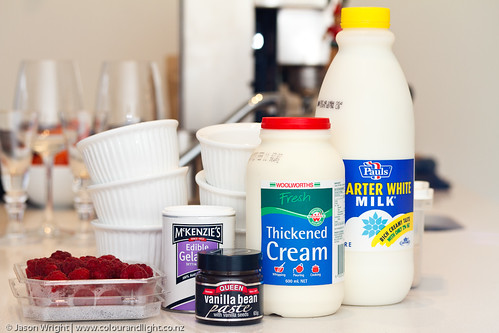
To make six serves, you will need one litre of liquid (cream/milk/yoghurt) to 3 tsp of gelatine powder (follow the packet instructions to reconstitute), plus a teaspoon of vanilla extract (or a whole vanilla pod, scraped) and 110g of fine sugar (again, you can play around with this - I've substituted brown sugar for a "caramel" panna cotta in the past).
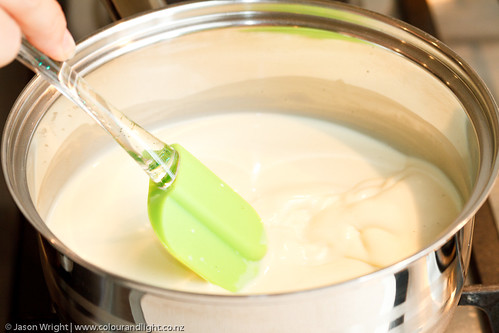
Add the cream, milk, sugar, and vanilla to a saucepan, and stir on medium heat until just boiling.
Add gelatine, stirring until dissolved.
Pour into moulds, and refrigerate until set (about 4 hours).
Run a sharp knife around the edge if required to get the mould to separate (or just eat straight from the pot!) Serve with fresh fruit.
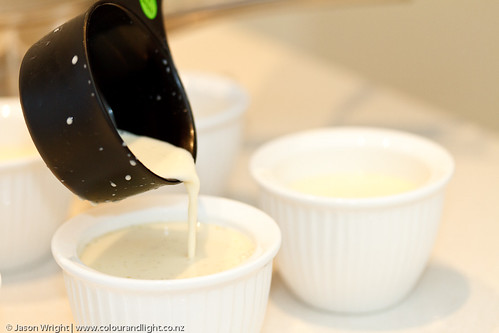
I also recommend finishing with a campari jelly, as in this Donna Hay recipe - yum!

Recipes vary widely - some use cream only, or add varying portions of milk for a lighter finish. I've seen yoghurt used in place of some or all of the cream, too. I recommend you find the mix that is right for you (I've settled at about one third milk).

To make six serves, you will need one litre of liquid (cream/milk/yoghurt) to 3 tsp of gelatine powder (follow the packet instructions to reconstitute), plus a teaspoon of vanilla extract (or a whole vanilla pod, scraped) and 110g of fine sugar (again, you can play around with this - I've substituted brown sugar for a "caramel" panna cotta in the past).

Add the cream, milk, sugar, and vanilla to a saucepan, and stir on medium heat until just boiling.
Add gelatine, stirring until dissolved.
Pour into moulds, and refrigerate until set (about 4 hours).
Run a sharp knife around the edge if required to get the mould to separate (or just eat straight from the pot!) Serve with fresh fruit.

I also recommend finishing with a campari jelly, as in this Donna Hay recipe - yum!
